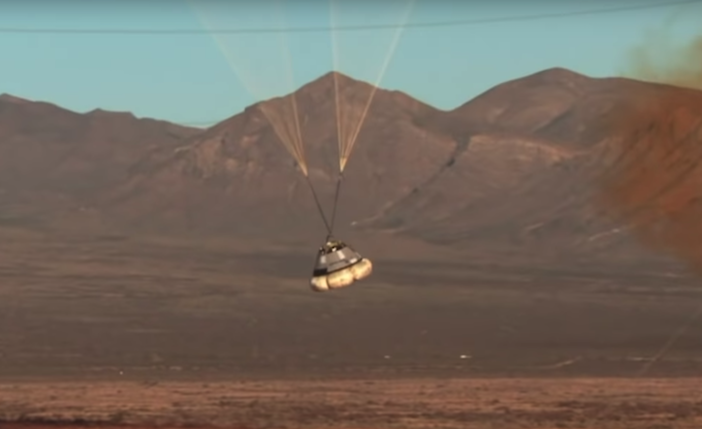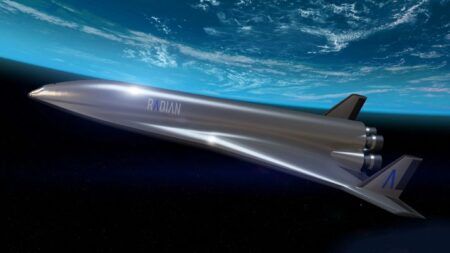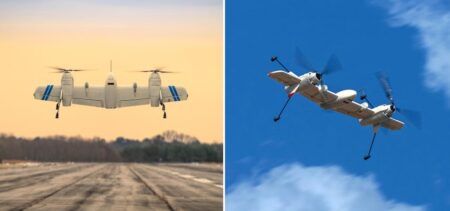Boeing’s CST-100 Starliner spacecraft has passed a key pad abort test, ahead of its first flight planned for next month.
The progress of the CST-100 testing is being closely followed by space industry experts and commentators. The pad abort test was streamed live online and can be viewed in its 43 minute entirety below.
The planned flight of the CST-100 with a crew to the International Space Station (ISS) next year will mark the reinstatement of the USA’s ability to launch its own astronauts into space without the use of a Russia Soyuz spacecraft. The USA has not launched astronauts from its own soil since 2011, when the last space shuttle flight was conducted.
The two-minute test proved the systems that enable astronauts to escape a launch pad emergency. During the test an uncrewed Starliner spacecraft lifted off under its own power from a test stand at the US Army’s White Sands Missile Range in New Mexico.
One of the spacecraft’s three parachutes did not deploy during the test, nevertheless the test was described as “flawless” by Boeing’s Starliner Program Manager John Mulholland.
“We did have a deployment anomaly, not a parachute failure,” said Boeing in a statement after the test. “It’s too early to determine why all three main parachutes did not deploy, however, having two of three deploy successfully is acceptable for the test parameters and crew safety.
“We will review the data to determine how all of the systems performed, including the parachute deployment sequence.”
The company also confirmed that the parachute anomaly should not affect its planned December 17, 2019 uncrewed maiden flight fort the CST-100.
Pad abort test events
During the test the Starliner fired its four launch abort engines and several orbital maneuvering and attitude control (OMAC) thrusters. Using 190,000 lbs of thrust, the spacecraft pushed up and away from the test stand to demonstrate how the system will move a crew away from danger if necessary.
The vehicle flew nearly a mile in just under 20 seconds before deploying its forward heat shield and parachutes.
Nearly 34 seconds into the test, the service and crew modules separated. As the crew module descended slowly to a safe landing under the parachutes, the service module continued to free fall as planned.
Just over a minute into the test, the vehicle’s base heat shield separated, allowing the Starliner spacecraft’s air bags to deploy and inflate in preparation for landing. The crew module touched down 95 seconds after the abort engines fired.
“We’ve tested all these systems individually, so we know the propulsion system fires at the intended levels, and we know the parachutes can support the vehicle and safely slow it down, but the real test is making sure those systems can perform together. That’s when you know these systems are ready to fly people,” said Boeing’s Pad Abort Test Flight Director Alicia Evans.
Over the next 24 hours, Starliner’s crew module will be recovered for evaluation and analysis. Conducting this test over ground helps to preserve the crew module for reuse, and Boeing will use the data from this test to further validate system performance during nominal landing operations.
Starliner is the first American-made orbital crew capsule to land on land, which will help make the crew modules reusable up to 10 times.
Contracts and the Dragon spacecraft
The CST-100 manned missions are part of a contract between NASA, Boeing and SpaceX to ferry crews of astronauts to and from the ISS from next year. The agency has contracted six missions with up to four astronauts per mission for each company.
The Starliner will launch atop a United Launch Alliance Atlas V rocket from Space Launch Complex 41 at Cape Canaveral Air Force Station in Florida.
The crew version of SpaceX’s Dragon spacecraft will launch on the company’s Falcon 9 rocket from historic Launch Complex 39A at NASA’s Kennedy Space Center.
SpaceX is making similar progress with its Dragon spacecraft and is expected to conduct its pad abort test this month or early December . Starliner is yet to be launched into space, whereas an unpiloted test flight of Dragon was conducted to the ISS in March this year.
NASA’s contract with Roscosmos for seats on its Soyuz spacecraft for US astronauts to the ISS ends in October next year. However, the space agency has said it intends to buy at least one more seat to guarantee access to the space station.





